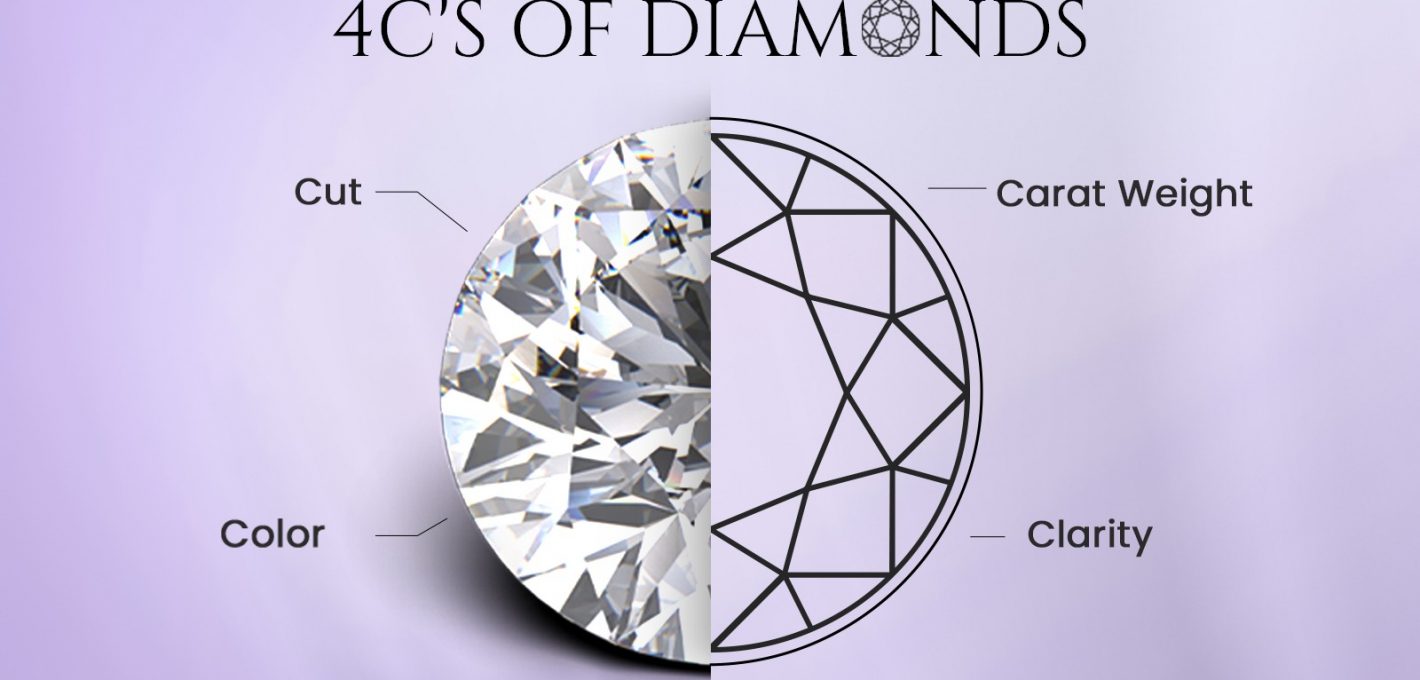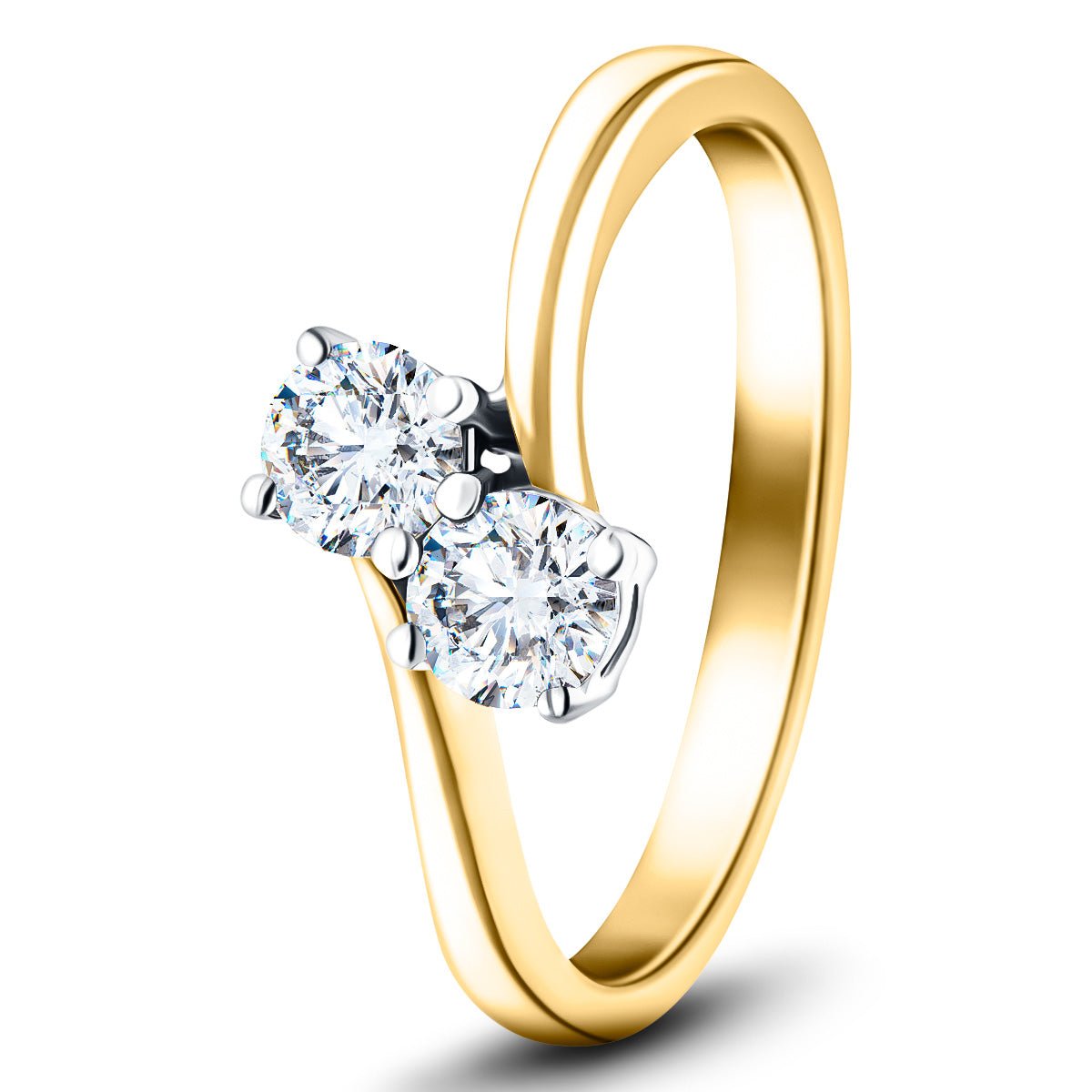
Lab grown diamonds have become an increasingly popular choice for those looking for ethically sourced, environmentally friendly, and cost-effective alternatives to mined diamonds. With the rising demand for lab grown diamonds 4Cs, it’s essential to understand the 4Cs that determine the quality of these diamonds. The 4Cs stand for Cut, Color, Clarity, and Carat Weight, and they are critical factors in evaluating a diamond, whether it’s lab grown or mined. This article will delve into each of these aspects in the context of lab grown diamonds.
Table of Contents
ToggleThe 4Cs: A Guide to Lab Grown Diamonds
Lab grown diamonds are chemically identical to natural diamonds, but they are created in controlled laboratory settings, mimicking the natural diamond formation process. Just like their natural counterparts, lab grown diamonds are evaluated based on the 4Cs. Each of these factors plays a significant role in determining the value and appearance of the diamond. Whether you’re purchasing a diamond for an engagement ring, necklace, or other jewelry, understanding the 4Cs is crucial to making an informed decision.
Cut: The Most Important Factor in Lab Grown Diamonds
When it comes to lab grown diamonds, the cut is perhaps the most important factor in determining its brilliance and overall appeal. The cut refers to how well the diamond has been shaped and faceted, which directly impacts how light is reflected and refracted within the diamond. A well-cut lab grown diamond will sparkle and shine, while a poorly cut one can appear dull, even if it has excellent color or clarity.
Lab grown diamonds come in various shapes, including round, oval, cushion, princess, and emerald. Each shape has its own characteristics and levels of brilliance. However, regardless of the shape, the cut remains the key factor in how effectively the diamond will reflect light. A high-quality cut will enhance the natural beauty of lab grown diamonds, making them a captivating choice for any occasion.
Color: The Spectrum of Lab Grown Diamonds
Color is another essential aspect of the 4Cs when evaluating lab grown diamonds. While diamonds come in a range of colors, the most valuable diamonds are colorless or near-colorless. In lab grown diamonds, the color is graded on a scale from D (colorless) to Z (light yellow or brown).
The fewer color traces a lab grown diamond has, the higher its grade. Colorless diamonds (graded D, E, and F) are the most coveted because they exhibit the most brilliance and sparkle. However, diamonds with slight color tints (graded G, H, I, and J) can still be an excellent choice for those looking to balance quality and price. Since lab grown diamonds are created under controlled conditions, their color grading tends to be more consistent compared to mined diamonds.
Clarity: The Purity of Lab Grown Diamonds
Clarity refers to the presence of internal or external imperfections in a diamond, known as inclusions and blemishes. While natural diamonds often have unique inclusions, lab grown diamonds are typically purer due to the precise conditions under which they are created. The clarity of a lab grown diamond is graded on a scale from Flawless (FL) to Included (I), with several intermediate grades.
A Flawless (FL) lab grown diamond has no visible inclusions under 10x magnification, while an Included diamond may have noticeable imperfections that affect its transparency and brilliance. However, it’s important to note that even diamonds with minor inclusions (graded VS or SI) can appear nearly perfect to the naked eye. Since lab grown diamonds often have fewer inclusions than their mined counterparts, they are an excellent choice for those seeking a high level of clarity at a more affordable price.
Carat Weight: The Size of Lab Grown Diamonds
Carat weight measures the size of the diamond, and it is one of the most straightforward factors when it comes to assessing a diamond’s value. Lab grown diamonds are available in a variety of carat weights, ranging from small accent stones to larger diamonds suitable for engagement rings and other significant pieces of jewelry. It’s important to understand that carat weight alone doesn’t determine the diamond’s value.
A larger carat weight in lab grown diamonds may come at a higher price, but other factors like cut, color, and clarity will also influence the final value. Additionally, lab grown diamonds can be a more affordable option for those seeking a larger diamond compared to mined diamonds of the same size. This makes lab grown diamonds a fantastic option for individuals who want the look and feel of a large, high-quality diamond at a more accessible price.
Why Choose Lab Grown Diamonds?
Lab grown diamonds offer several advantages over traditional mined diamonds. Not only are they more environmentally friendly and sustainable, but they also come at a lower price point. Because lab grown diamonds are created in a controlled environment, they can be produced with fewer impurities and a more consistent quality, which is why many consumers prefer them over natural diamonds.
Furthermore, lab grown diamonds can be customized to meet specific preferences in terms of size, cut, color, and clarity. This makes it easier to find the perfect diamond within your budget, without compromising on quality. Whether you’re looking for an engagement ring, a pendant, or any other piece of fine jewelry, lab grown diamonds offer an ethical and sustainable choice without sacrificing beauty or value.
Conclusion: Making the Right Choice with Lab Grown Diamonds
In conclusion, lab grown diamonds are a remarkable option for those seeking a more ethical, sustainable, and affordable alternative to mined diamonds. Understanding the 4Cs of lab grown diamonds—cut, color, clarity, and carat weight—will help you make an informed decision when purchasing a diamond. By focusing on these factors, you can ensure that your lab grown diamond shines with exceptional beauty and brilliance. Whether you’re drawn to their ethical sourcing, cost-effectiveness, or their remarkable sparkle, lab grown diamonds are an excellent choice for any occasion.





